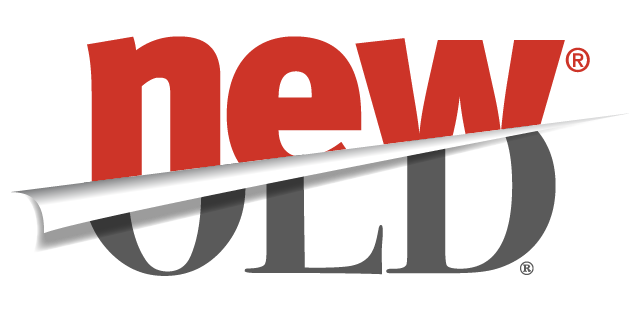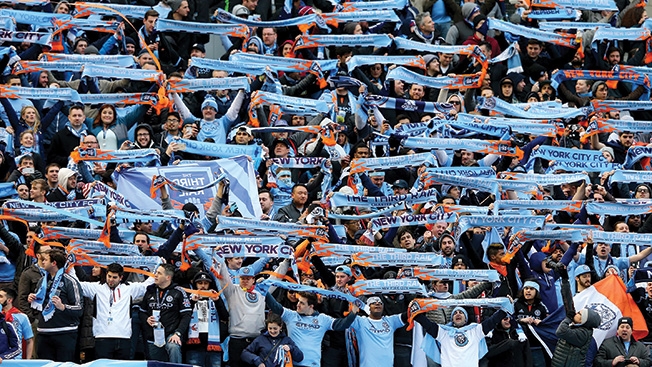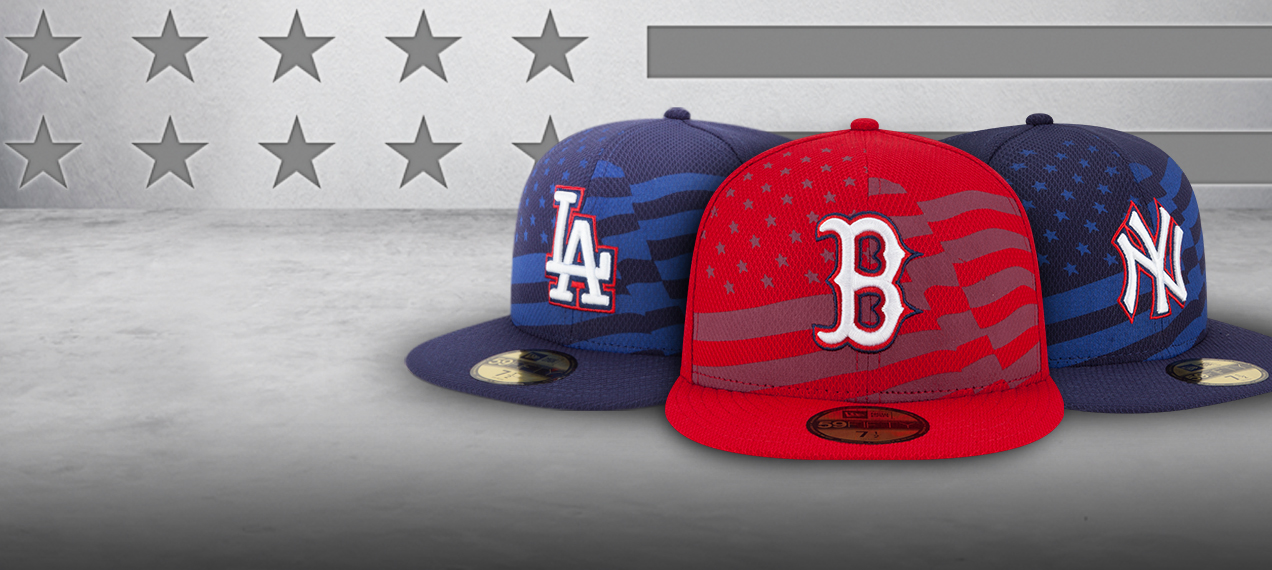Content is King: Brands See Benefits of Quality Content Creation
For brands, having a strong and prominent presence online is a vital aspect for success in today’s digitally-driven age. Consumers are spending more time online and more time researching their purchases, therefore raising consumer awareness to an all-time high. This is especially true in B2B services and more targeted industries, where there may be less competition for business, but also less overall awareness of the space.
If a potential consumer is looking to enter a space where they know little about the companies involved, chances are good they will be putting much of their purchasing decision weight into the online presence of those companies within that space.
For instance, if a potential consumer is looking for a vendor to help their business with its printing needs, chances are good they don’t know all of the players in this industry. But when they start looking online, they see one company that shows up at the very top of a number of their searches. This company now possesses credibility with the consumer, who chooses to learn more about that brand. If the brand’s website is up to par, then the decision to purchase was effectively made by who sits at the top of the search rankings.
It’s been widely reported and researched that the vast majority of B2B purchasers are more likely to make a hire with a company or brand that provides them content in a meaningful way. Simply put, the content you deliver drives trust, brand awareness and credibility, which ultimately can drive sales.
And now, thanks to an update in Google’s search algorithm, creating content is no longer a “nice to have” but a “need to have” for brands that want to show up in the search rankings. Like keywords in the past, strong content now has a direct and significant impact on how high your site will rise on Google’s search rankings. Everything from blogs and social media to the main brand website, content truly is king when it comes to search and online optimization.
It is important to know that Google greatly favors quality over quantity. With the aforementioned changes, Google has begun penalizing and negatively impacting sites that distribute thin and irrelevant content for the sake of just having it. This is great news for brands who want to level the playing field in search and no longer have to worry about falling behind competitors posting endless strings of poor quality content.
Additionally, the level playing field also has given rise to those brands that have fully embraced quality content creation and are providing the informational, meaningful and interesting content that benefits their target audience. There are many variables that go into a brand strategy success, but one mustn’t forget to continue that strategy past the initial launch, or forget the importance of a strong online presence. With quality, search-optimized content, your consumers can find and research you easily and effectively, driving business results.
Who would’ve thought blogging could have such a great ROI?
Addison Whitney is a global branding firm with a passion for building strong brands.
To learn more about Addison Whitney, visit our website at AddisonWhitney.com, or contact us here.
Brands with Long Histories Opt for Short Names
In recent years large and well-established brands that have long been able to rely on their long-standing history as the primary source of their brand equity have realized that, in a changing world, their past reputation may not be enough to propel them forward. In some cases, it is their impressive past which is the very thing holding them back. Companies which date back to the 1800s and early 1900s run the risk of seeming outdated and/or stuffy, especially among millennials.
Several large brands in industries as varied as banking, real estate, and even phone books, have made it their goal to change this perception through branding.
Ernst & Young, a financial institution which specializes in accounting, began in 1903. The name Ernst & Young probably brings to mind the phrase “Big Four Accounting Firms.” Thus, Ernst & Young’s 2013 rebrand accomplished the two-fold goal of both revitalizing an entrenched brand, while also redefining what their company can offer the customer beyond accounting services.
Ernst & Young rebranded themselves as EY, incorporated a new logo, website, and slogan -“Building a Better Working World,”- into their comprehensive rebranding strategy. Their previous logo and motto, “Quality in Everything We Do,” had been vague, reflecting the average consumer’s vague understanding of what exactly an accounting firm does. Now, with a yellow icon signifying upward progress and a motto that is a concise definition of their function, EY has positioned their brand better for the new generation.
Sometimes, the changes don’t have to involve an entire rebrand, but can include tweaks to the current branding elements that help bring the brand and company up to speed in the current market environment.
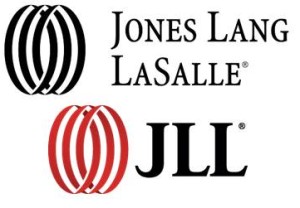 Jones Lang LaSalle is a great example of this “tweaking” strategy. Begun in 1773, this commercial real estate firm was struggling to adapt their brand to the increasingly international real estate market of today. However, in 2014 they rebranded as JLL. This rebrand was accompanied by the same icon as their original logo but with a change towards a new, brighter red. JLL announced that this new name was intended to increase pronunciation and recognition ease in international markets.
Jones Lang LaSalle is a great example of this “tweaking” strategy. Begun in 1773, this commercial real estate firm was struggling to adapt their brand to the increasingly international real estate market of today. However, in 2014 they rebranded as JLL. This rebrand was accompanied by the same icon as their original logo but with a change towards a new, brighter red. JLL announced that this new name was intended to increase pronunciation and recognition ease in international markets.
Both EY and JLL used visual and verbal branding changes to re-position their brand for the new generation, but, in some instances, companies may find it necessary to extend their rebrand even beyond those two categories and make larger brand strategy changes that physically change the way the company acts, not just how it looks or sounds.
Yellow Pages, a company which was born in 1886, and had used the “walking fingers” logo since 1962, was perhaps even more in need of a brand resuscitation than either EY or JLL; not only was The Yellow Pages brand perceived as antiquated but their entire business concept was quickly becoming obsolete.
Thus, rebranding Yellow Pages to YP involved not just creating a new name, but ensuring that the functioning of the company reflected the modern, convenient connotations of that 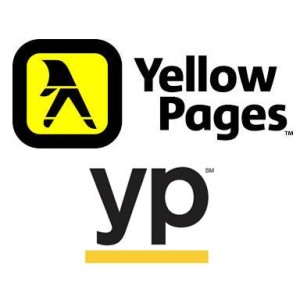 name. Yellow Pages thus focused on the creation of a new app with GPS features that allow easy access to Nearby Coupons, Popular Business Listing, and more. YP is no longer an unwieldy book of largely unhelpful information but, in fact, the complete opposite; YP is, as their slogan says, “the shortest path from to-do…to done.”
name. Yellow Pages thus focused on the creation of a new app with GPS features that allow easy access to Nearby Coupons, Popular Business Listing, and more. YP is no longer an unwieldy book of largely unhelpful information but, in fact, the complete opposite; YP is, as their slogan says, “the shortest path from to-do…to done.”
The demands of convenience, simplicity, and innovation are not new, but with each new generation, it is important for brands to reevaluate what those words mean to the consumer, because the definitions are ever-changing.
Addison Whitney is a global branding firm with a passion for building strong brands.
To learn more about Addison Whitney, visit our website at AddisonWhitney.com, or contact us here.
New Report Highlights Importance of Strong Employer Brands
Employer branding, which has a reputation of being an afterthought in the branding process, is showing its worth in organizations throughout the world, according to a recent report from Randstad Talent.
The newly-released report found that 61 percent of human resources leaders studied felt that a strong employer brand is the most critical factor in attracting top talent.
Building a strong employer brand is an often overlooked but necessary aspect of the branding process, as this report reiterates. Organizations must continue to look inward when building their brand, taking into account the needs of their employees and how branding efforts will impact this group in addition to their external audiences.
Another stat that shows the shift in importance for employer branding is that 69 percent of organizations in India responded that they have increased their employer branding focus compared to where they were five years ago. This increase  shows not only that these organizations are seeing the impact branding can have on their employee engagement, but also the rise in social media and online resources that potential and current employees have at their disposal.
shows not only that these organizations are seeing the impact branding can have on their employee engagement, but also the rise in social media and online resources that potential and current employees have at their disposal.
These online outlets are prime spots for potentially damaging information to be posted, which can affect job recruiting efforts alongside efforts to keep turnover low. Without a strong employer brand, any negative piece of publicity will damage credibility with your employees, and will cause some potential employees to shy away, unsure of the true strength of the organization.
In these situations, it is important that employer branding either be included in an organization’s overall branding strategy and efforts, or that it follow a similar template for establishment. Strong brands can withstand negativity and thrive in showing the good that exists, which is especially important for internal/employer branding.
As mentioned before, not only can a strong employer brand assist in the recruiting and hiring of top talent, but it can also play into keeping that talent for longer periods of time. The younger generations of workers are inherently more transient than their predecessors – five years at one job is considered a long time, and very few spend their entire careers at one company. Because of this, keeping these employees satisfied and fulfilled in their roles is bolstered by a strong employer brand, which highlights the positive aspects of the organization and its benefits.
Randstad’s recent findings are a welcome piece of information for those advocating the need for strong employer brands, and as the numbers continue to rise, so too will the awareness of those not already on board.
Addison Whitney is a global branding firm with a passion for building strong brands.
To learn more about Addison Whitney, visit our website at AddisonWhitney.com, or contact us here.
AW Intern Chronicles: One Month In!
Every summer, Addison Whitney welcomes an outstanding group of college students into the office as our summer interns. This year, our class consists of four interns representing three schools from around the area – these four will be working in the marketing, brand strategy, market research and verbal branding departments, and we are excited to have them on board this summer!
Today, we have a post from Caroline Beuley, who is interning in the marketing department, giving us a look inside her first month at AW!
Not only is this my first month as an intern at Addison Whitney, but this past month has been my first month as an intern ever. Everyone has heard the horror stories; in fact, many of my friends have experienced the making copies, answering calls, running errands and fetching coffee-brand of internships that lie in wait for the employment-desperate college student.
On the other hand, Addison Whitney’s webpage proclaimed that at their internship, “The only coffee you’ll get is your own.” This seemed like a good sign, but I knew I wouldn’t know until the internship really began.
After my first month at AW, I have gotten a lot of caffeinated beverages, but they have all been for myself, and they have been Diet Coke (because coffee is gross).
What I mean to say is that working at Addison Whitney has required self-sufficiency and a constant alertness, hence the caffeine. While I have some responsibilities that don’t change week to week, such as compiling a comprehensive list of Addison Whitney’s past projects or writing a blog post for brand salsa, the company blog site, my daily routine is always changing and evolving as I become more knowledgeable and experienced.
In the first two weeks of my internship, I presented a brand audit to Addison Whitney team members comparing the branding strategies of a pair of yogurt brands. Two weeks later, I presented a competitive audit of ten different branding firms with a fellow intern to six Addison Whitney employees, a task which I would not have believed myself capable of at the onset of my internship.
Something that I would have believed even less at the start of my internship was that my bosses would not only want to teach me but to learn from me. In this presentation, however, I watched as the people who had interviewed me a few months ago took notes, asked questions, and genuinely listened to my responses as I described the techniques and strategies of other branding agencies.
My favorite part about my internship so far is that Addison Whitney has made me feel valued, and, consequently, I have learned to value it. My second favorite part is the free candy, Diet Coke, ice cream, and sometimes, if you’re very lucky, popcorn chicken.
Addison Whitney is a global branding firm with a passion for building strong brands.
To learn more about Addison Whitney, visit our website at AddisonWhitney.com, or contact us here.
WEBINAR: New Health Canada Regulatory Guidelines: Are You Prepared?
In June 2015, Health Canada’s new guidance for the review and submission of drug brand names went into effect bringing with it significant changes in how your drug brand names will be reviewed, and the responsibilities of the drug manufacturers in this new process.
To learn more about these changes and how this will impact your preparations to launch a product in Canada download Addison Whitney Health’s webinar where we cover:
- Overview of the regulatory changes
- New steps involved in the process: Search, Simulate and Synthesize
- Name preparation & submission process
- FAQ's about Health Canada's changes
Download the video here: http://bit.ly/1e0tBEd
Brand Sale: Procter and Gamble Shakes up Brand Portfolio
Proctor and Gamble has been a case study for branding strength for the past 50 years. Its market insight, audience-centricity and ability to invest in brands have grown its brand portfolio to 180 total brands, including 23 different billion-dollar brands.
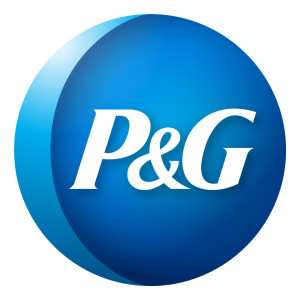 Brands have come into the P&G fold through internal innovation (think Swiffer) as well as through acquisition like Gillette, Duracell and Braun. Through a multi-brand approach, P&G has been one of the few companies to win entire categories– like laundry detergent with brands such as Tide, Gain, Era and many more.
Brands have come into the P&G fold through internal innovation (think Swiffer) as well as through acquisition like Gillette, Duracell and Braun. Through a multi-brand approach, P&G has been one of the few companies to win entire categories– like laundry detergent with brands such as Tide, Gain, Era and many more.
In the past when marketing dollars flourished, route to consumer communication was simple through major network TV and the battle for shelf space was won through a handful of macro-retailers, the P&G model excelled. Other consumer brand holding companies like Unilever and Newell Rubbermaid tried to emulate the P&G model through consumer insights and go-to-market excellence.
But as we know, the market today is different than it was even 5-10 years ago. The consumer is savvy, their ability to gain information from a wide array sources has increased, their ability to communicate with one another is broader and easier and the customer landscape in an omni-channel world is ever expanding.
In order to meet greater global market complexities, P&G has decided to alter their approach towards the market with one of most publicized brand portfolio shakeups we’ve seen in recent years. A.G. Lafley, the company's chairman, president and CEO has cast a vision of a future P&G that is "a much simpler, much less complex company of leading brands that's easier to manage and operate."
What does this mean for the marketplace?

Surely, there are active groups of companies doing internal market analysis for which of the P&G brands they could get their hands on, which brands if purchased could best complement their brand portfolios, and how could they fund these house-hold-named brands in order to win greater market success. This strategy can be seen with Coty, a global beauty products manufacturer, buying up 43 P&G beauty brands to align to its global brand portfolio.
The brands that P&G decides to keep will surely continue to be strong, well-known, well- funded and most likely have more innovations and partnerships between brands to bolster brand strength in place of creation of new product brands– think Tide, Tide Pods, Tide HE Turbo, Tide with Febreze, etc.
I will miss the idea of a P&G giant portfolio, mostly because it reminds me of simpler times. I was hoping that fewer, bigger, better was only in the minds of the scrappy – but it seems that even this marketing giant has to face the reality of scarce resources, improved profitability and streamlined go-to-market strategy. I have no doubt that P&G will execute with excellence, and I’m excited to see what the purchasers of these global brands have in mind for the P&G brands entering their portfolios. It’s one of the things I love most about marketing and brand strategy; time will only tell who does it best.
Addison Whitney is a global branding firm with a passion for building strong brands.
To learn more about Addison Whitney, visit our website at AddisonWhitney.com, or contact us here.
Branding Beyond the Field
When determining the success of a sports franchise brand, the product on the field obviously plays a large part. Wins bring publicity, excitement and recognition, all which are important aspects for any team’s brand.
But much of what goes into building a strong sports brand can’t be counted on the scoreboard. When looking to successfully brand a sports franchise, many lessons can be learned from branding organizations.
Understanding the audience is an important part of ensuring a brand’s success, and with sports franchises two major audience groups emerge – their fans, and the media. These two drive much of the success factors for branding in sports, and but hold much different places in a brand strategy.
 The media sits at the confluence of two main arteries in branding – the need for a brand’s essential aspects (name, logo, colors, etc.) and the want for secondary branding (brand characteristics, persona, etc.) – in order to do their job.
The media sits at the confluence of two main arteries in branding – the need for a brand’s essential aspects (name, logo, colors, etc.) and the want for secondary branding (brand characteristics, persona, etc.) – in order to do their job.
A team without a name isn’t a very easy team to write or broadcast about, and one with an unfavorable color palette will cause headaches for the television producers. Additionally, a team with a strong brand and culture is one that breeds quality storylines, leading to additional media coverage. Therefore, when creating these aspects of a brand, the ease at which a franchise can help this group is beneficial in gaining appreciation and assistance moving forward.
The fan audience is one that not only engages in the resulting brand materials, but also looks to be actively involved in establishing a connection with the brand. Franchises would be wise to create brands that strengthen this relationship, from actions designed to ingrain the team into the local culture or fan groups or by including the opinions of their fans in franchise decisions.
New York City FC, a Major League Soccer team that debut this season and plays its games in Yankee Stadium, has embraced the concept of connecting to its city and fans by focusing much of its branding efforts on cementing its role as “New York City’s Team.” From crowdsourcing the decisions of various brand elements, such as the team’s logo, to focusing on what Tom Glick, President of NYCFC, said about branding the team, “We wanted to give birth to a new club for New Yorkers, to build it with New Yorkers.”
The team was smart in this strategy because they understood both the passion felt by soccer fans to their favorite clubs, and also the close connection many New Yorkers have for their city. Combine these two and you have a potential fan group who is deeply loyal to their hometown club, and one they weave into the very fabric of their community. Using them as a resource in building the brand and continuing to help it grow gives a grassroots feel that allows the fans to be involved and connected, strengthening their emotional bond with the club.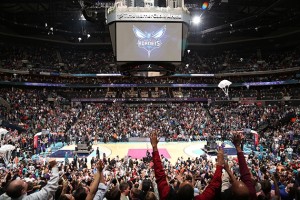
For instance, just as with other branding strategies, finding the right name goes a long way. As they say, you only get one chance to make a first impression, and the majority of the time, the name is that first impression, one that will continue to resonate throughout its time in use.
It is also the brand aspect that carries the most weight in exposure for the brand, as any reference to the team will more than likely use some aspect of its name. The name should resonate with the fans, as the NBA's Charlotte Hornets learned when they researched a rebrand from their old name as the Charlotte Bobcats.
When the first iteration of the Hornets relocated, the NBA gave Charlotte an expansion team, which was named the Charlotte Bobcats - an example of a name that had no history with the area and no emotional connection with the local population. After years of this disconnect, the team announced to much fanfare the return to the original Hornets name and colors, and the introduction of a logo that hearkened back to the prior Hornets logos.
The acknowledgement of the strength of the Hornets brand and the actions taken to return to this brand showed how much the Charlotte franchise valued their fan audience.
Branding a sports franchise can be a long, sometimes bumpy, journey. These brands are some of the most visible in the world, and their impact can be far-reaching. But by understanding the audiences, working to help meet their needs and allowing for a brand to settle a strong foundation, this global reach can be a welcome return.
Image sources:
https://www.nba.com/hornets/gallery/hornets-brand-identity-launch
https://matchstic.com/blog/tag/oregon-football-uniforms/
Addison Whitney is a global branding firm with a passion for building strong brands.
To learn more about Addison Whitney, visit our website at AddisonWhitney.com, or contact us here.
Diet Coke: A Case for Individualized Branding
Recently The Coca-Cola Company has revealed their plans to market all of their Coca-Cola related brands - Coca-Cola, Coca-Cola Life, Coca-Cola Zero, and Diet Coke - as a cohesive team of products, rather than individually.
Market research has shown that there is some confusion about what differentiates these four products, and the Coca-Cola Company hopes that marketing them as variations of one larger product, Coca-Cola, will help not only to clear up this confusion, but also to strengthen the overall brand to the great benefit of each individual product.
As seen to the right, an associated magazine ad emblazoned with the slogan “Good things come in fours,” shows a clear example of what the company’s new strategy will entail. I think bringing brands closer to a larger corporate brand, especially one as powerful and recognizable as Coca-Cola, is great strategy for three of these four brands.
However, Diet Coke, a soda which doesn’t even share the Coca-Cola name like the other three drinks in this branding strategy, has developed such a strong brand identity unique from its corporate company that this homogenization will, in my opinion, fundamentally change Diet Coke.
So what it is that makes Diet Coke so different from other Coca-Cola brands? A Diet Coke, like the Starbucks Cup, has become the handheld beverage accessory of the fashionable, endorsed by celebrities like Ariana Grande and Lady Gaga.
Most recently Diet Coke has launched an extensive and emblematic ad campaign featuring the fashionable and famous Taylor Swift. The red words spelled out on a Diet Coke can coordinate perfectly with Taylor’s well-known red lips. Even beyond this, Taylor aligns perfectly with the brand image of Diet Coke because she has recently become a fashion icon, not just in elite circles of Hollywood, but to the average young woman, a group which Diet Coke has always prioritized  in their marketing. Recently, Taylor’s fashion choices have become very bold, without sacrificing the stylish class she has always been known for. Thus, Diet Coke, a classic but still immensely popular and always innovating, is Taylor’s beverage equivalent.
in their marketing. Recently, Taylor’s fashion choices have become very bold, without sacrificing the stylish class she has always been known for. Thus, Diet Coke, a classic but still immensely popular and always innovating, is Taylor’s beverage equivalent.
Diet Coke’s brand isn’t just approved and endorsed by fashionable celebrities. It has even earned the backing of fashion designers themselves. Over the past decade Diet Coke has rolled out a tremendous number of limited edition designer bottles and cans. Comm De Garcons, Diane Von Furstenberg, and Marc Jacobs are just a few of the many designers who have jumped at the chance to have their designs featured on a Diet Coke bottle.
Diet Coke even hosts an annual “Red” fashion show to support women’s heart health and also to remind the world of their preeminence as a stylish soda. Diet Coke, when it was created thirty three years ago, was made with an entirely different recipe than Coca-Cola.
Unlike Coca-Cola Zero, Diet Coke isn’t just Coca-Cola without the calories; it is its own uniquely flavored drink, and just as Diet Coke’s physical ingredients are different from Coca-Cola, so too are the ingredients that make up their branding and marketing strategy.
The day after Labor Day, Diet Coke tweeted “you shouldn’t wear white after Labor Day, but no one said anything about silver and red.” Rather than just wishing its followers a happy Labor Day, the Diet Coke brand took the opportunity of using the day after this holiday to remind the Twitter world of their brand’s role as a versatile fashion accessory.
In my opinion, this really sums up the image of Diet Coke. Not only is it deliciously addicting, but it carries connotations of style that no other soda can match, connotations which risk being lost if Diet Coke becomes only another option in the homogenous Coca-Cola lineup.
Image sources:
https://www.marketingweek.com/2015/03/06/5-things-you-need-to-know-this-week-5/
https://blog.acmebrooklyn.com/post/62999727300/acme-taylor-swift-and-a-diet-coke
Addison Whitney is a global branding firm with a passion for building strong brands.
To learn more about Addison Whitney, visit our website at AddisonWhitney.com, or contact us here.
Branding with Emotion
It is well known that people often buy based on emotions, and justify with facts. PsychologyToday.com cites a study which showed “when evaluating brands, consumers primarily use emotions [such as] personal feelings and experiences rather than information.”
Though offering very different products, two relatively new brands, Packed Party Gift Boxes and S’well Water Bottles have used this unique, human tendency to turn their brands from one-woman shows to nationwide phenomenon in a matter of years. Each company has taken advantage of the ability of social media, and especially Instagram, to appeal to the emotions of a large group of followers. These companies’ social media accounts are undeniably cool, quirky,  interesting, and stylish, suggesting to their many followers that their brands not only possess all of these characteristics but that, in fact, the brands might be able to confer these traits in part upon those who use them.
interesting, and stylish, suggesting to their many followers that their brands not only possess all of these characteristics but that, in fact, the brands might be able to confer these traits in part upon those who use them.
Sarah Kauss, a Harvard grad and founder of S’well water bottles, has cleverly created a water bottle brand that has both a fashionable appearance, initially speaking to the emotions of the consumer, and functionality that then captures his or her loyalty. For many water bottle companies, functionality is their branding strategy. For other companies, style is the chosen focus of their brand. However, S’well has created a distinct brand centered around the concept of fashionable functionality, using the stylish elements of the bottle to appeal emotionally to the consumer, while also supporting the style with usefulness.
S’well’s Instagram is full of fashionable people, their outfits, and sometimes even their nails, coordinated to their water bottles. Thus, the brand has been able to gain reputability as a fashion item, a reputation which has helped them gain partnerships with even larger fashion influencers like J. Crew, Nordstrom, and Vogue. Now, with 34,800 Instagram followers, revenues exceeding 10 million in recent years, and celebrities toting them everywhere, I think it’s fair to say that S’well bottles have become the most stylish sip for sale.
 Packed Party, with 37,700 Instagram followers, also began from one woman armed with an idea and an ability to cater to the emotional desires and impulses of consumers. Jordan Jones, the founder of this quirky, fun, and utterly Instagrammable brand says that the company’s entire brand strategy revolves around her hope that “each time you send or receive one of our navy packages you smile…knowing someone else cares about you or you care enough about yourself to know you need to start the party.”
Packed Party, with 37,700 Instagram followers, also began from one woman armed with an idea and an ability to cater to the emotional desires and impulses of consumers. Jordan Jones, the founder of this quirky, fun, and utterly Instagrammable brand says that the company’s entire brand strategy revolves around her hope that “each time you send or receive one of our navy packages you smile…knowing someone else cares about you or you care enough about yourself to know you need to start the party.”
This statement of purpose is centrally focused on the emotional effect her brand has on consumers. Through social media marketing, Jordan Jones has shown herself, her employees, and the people who celebrate with a Packed Party to be confident, kind, and just downright fun. She has branded her company as people who I would trust implicitly to plan a party for me, and from Packed Party’s large Instagram and blog following, it’s evident that many others feel the same way. Jordan has demonstrated a unique ability to further the success of her brand by making sure her customers not only trust Packed Party, but also have a girl crush on the women responsible for creating those little navy boxes.
Unless you’re a robot, chances are you feel emotions; so, while both of these companies are selling products that are certainly not a practical necessity to anyone, they have been successful because they have branded their products as emotional necessities. Packed Party looks like the most fun, cool product, so I need it. S’well looks like the most fashionable, coveted water bottle, so I need it. Emotions blur the lines between need and want, and each of these branding campaigns has successfully moved S’well and Packed Party into that blurry, grey area.
Addison Whitney is a global branding firm with a passion for building strong brands.
To learn more about Addison Whitney, visit our website at AddisonWhitney.com, or contact us here.
Branded on the Fourth of July
As June comes to a close, consumers begin to see the flood of red, white and blue wash over their favorite brands, as each looks to find a way to incorporate the Fourth of July into their branding, marketing and advertising efforts.
 As with many holidays, brands can easily get lost in the increased noise of similar branding strategies – there are always the go-to ways to incorporate Halloween into branding, for instance – but the Fourth of July offers brands varying angles to which they can position their brand.
As with many holidays, brands can easily get lost in the increased noise of similar branding strategies – there are always the go-to ways to incorporate Halloween into branding, for instance – but the Fourth of July offers brands varying angles to which they can position their brand.
Branding on this holiday, and any holiday, must consist of careful and well-thought strategies that succeed in maximizing the inherent positive associations of the holiday but yet still stay true to the overall brand positioning. Going too far off that plan is a recipe for disaster, opening a brand up to seem as if they are willing to abandon their core brand principles in the name of an easy marketing campaign possibility.
Brands who understood how to walk this line and know how to connect the holiday to their branding characteristics continued to stand out in a crowded marketplace.
For instance, Brit + Co., an online media and e-commerce platform who has built their brand around providing women and girls with tools designed to teach, inspire and enable their creativity, created an email marketing campaign centered around the celebratory aspect of the holiday, highlighting some of their most patriotic and colorful merchandise. The design of the email matches the design of their website, promoting brand unity across all of the platforms.
Brit + Co. shows that they get how to fit the characteristics the holiday with the characteristics of their brand. Their brand personality is fun, quirky, creative and colorful – all of which can be used to describe their Fourth of July branding and marketing. By focusing on the beach/party atmosphere, they touch on their creative sides, showing people how to creatively throw their own Fourth of July soiree.
The professional sports industry is one that has never been shy about strategically branding itself for these patriotic holidays. For the past few years, professional baseball leagues have welcomed the holiday with patriotic-themed, one-time-only uniforms and hats. From the lowest levels of the minor leagues all the way up to the clubs that make up Major League Baseball, teams across the country wear these uniforms and hats, which are supplemented by various red, white and blue accessories, from batting gloves and undershirts to bases and themed designs cut into the field.
In a vacuum, these special uniforms and hats can seem to fall within the realm of celebrating the holiday while without going too far outside their comfort zone – as do most uniform modifications. However, much criticism for these leagues when they trot out “special” uniforms is that they immediately put these items up for sale, seemingly proving that the reason for the re-branded product isn’t to celebrate or commemorate, but to make some extra money on merchandise sales.
The Fourth of July is a holiday commemorated by all Americans and has turned into a day to celebrate all things red, white and blue. Any time you can find a way to connect a brand to such a large audience, and to have a little fun in the process, go for it. It’s what the Founding Fathers would want.
Image Sources:
https://blog.hubspot.com/marketing/july-fourth-marketing-examples
Addison Whitney is a global branding firm with a passion for building strong brands.
To learn more about Addison Whitney, visit our website at AddisonWhitney.com, or contact us here.


